Where bees won't go: The unloved pollinators of the underworld
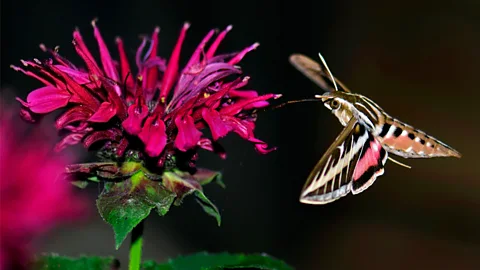 Alamy
AlamyNew research is showing just how much plants and crops rely on a host of darkness-dwelling creepy crawlies.
Think pollination, and you will likely picture a butterfly or bee flitting between flowers. But while these are indeed important pollinators, both the natural world and our food supplies rely on a host of other creatures, some of them decidedly less appealing.
Most of the world's 350,000 species of flowering plants rely on animal pollinators for reproduction. Pollinators and their importance for ecosystems are increasingly in the spotlight in recent years due to the dramatic decline in their numbers. Birds, bats, bees, bumblebees and butterflies have all been affected, with some populations shrinking by 80% or more. The causes include habitat loss, pesticides and climate change.
And recent research has also shown that pollinator diversity is just as vital for ecosystems and cultivated plants as the sheer numbers of pollinators, and found that this diversity is on the decline for similar reasons.
Scientists estimate that 3-5% of fruit, vegetable and nut production is lost globally as a result of inadequate pollination, affecting the availability of healthy food and threatening human health.
From cockroaches and beetles to the tiny "bees of the seas", here are some of the most unexpected, and occasionally disconcerting, pollinators the world continues to rely on – even if we don't always see them.
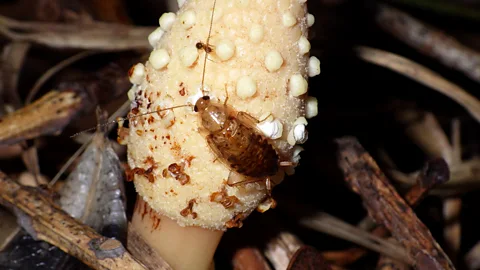 Kenji Suetsugu
Kenji SuetsuguCockroaches
Cockroaches are, in the words of one study, "among Earth's most despised creatures". But recent research suggests they play a beneficial and long overlooked role as plant pollinators – especially in the darker areas of forest often avoided by the world's more beloved bees and butterflies.
"Traditionally, pollination has been associated with bees, flies, moths and butterflies," says Kenji Suetsugu, a professor of biology at Kobe University in Japan. "However, emerging studies reveal that unexpected visitors such as cockroaches can play significant roles under certain conditions."
These "alternative pollinators", he adds, are often particularly important in environments where conventional pollinators are scarce, such as "in dense, shaded understories where light is limited and typical pollinators are infrequent".
In fact, a growing body of research suggests that cockroaches act as pollinators in a rich and varied range of ecosystems – a role that previously went mostly unnoticed by researchers, since the creatures are nocturnal and less obvious in their interactions with plants than bees. In recent years, cockroach pollination has been reported for plant species such as Clusia blattophila, which grows on rocky outcrops in French Guiana, and the rare and endangered Vincetoxicum hainanense in China, amongst others.
Suetsugu has studied the role of cockroaches in pollination in dense, evergreen forests on Yakushima Island, a lush, subtropical island off Japan. He was specifically interested in cockroach-assisted pollination of Balanophora tobiracola, a mushroom-shaped parasitic plant.
Since cockroaches are elusive and nocturnal, he used several tricks to better understand their interactions with this plant. For example, he set up a waterproof digital camera in front of one flowering plant which took photos of it in 50-second intervals from dusk till dawn for around three weeks. The resulting photographs – more than 34,000 shots – showed cockroaches visiting the flower at night. Suetsugu also captured cockroaches after they'd visited the plant to identify and count the pollen grains on their bodies.
To investigate how a single cockroach visit affected the plant's chance of setting fruit, he enclosed five of the plant's flowers with a fine mesh and opened it only for one visit by the Margattea satsumana cockroach (the most frequent cockroach visitor for this plant), then closed it again. He compared this with other treatments of the plant, such as covering the flowers with mesh for the entire flowering period, to exclude all pollinators.
The study, published in 2025, provides "the first direct evidence of effective cockroach pollination" in this type of plant, says Suetsugu. "In the case of a single visit [by a cockroach], nearly 40% of flowers developed pollen tubes, a strong indicator of successful pollination."
 Getty Images
Getty ImagesBeetles
As soon as the first ever flowers unfurled from their buds in the early Cretaceous period, they were visited by pollinators. But those first soft landings on their petals weren't by bees or butterflies – instead, it's thought that the pioneers of pollination may have had six scuttling legs and tough, shiny shells. They were beetles.
Beetles remain important pollinators to this day, often visiting flowers with the most seemingly unpromising allure – little nectar, greenish flowers, and an overpowering, possibly putrid smell, a set of traits known as "beetle pollination syndrome".
Despite millions of years of evolution, beetles remain among the most frequent pollinators of primitive flowers which emerged among the dinosaurs, such as magnolias. And unlike the more well-known modern pollinators, many beetles like to operate at night, flying or crawling towards the warmth and delectable scent emitted by certain beetle-specialised flowers, such as lowiaceae orchids in Borneo which smell strongly of faeces – a favourite of dung beetles.
 Alamy
AlamyMoths
As they hover above wild tobacco flowers, hawkmoths unfurl their 8cm (3in)-long proboscis to drink up its nectar – among their favourite meals. As they do this, grains of pollen are also pulled – as if by magic – across air gaps of several millimetres or even centimetres.
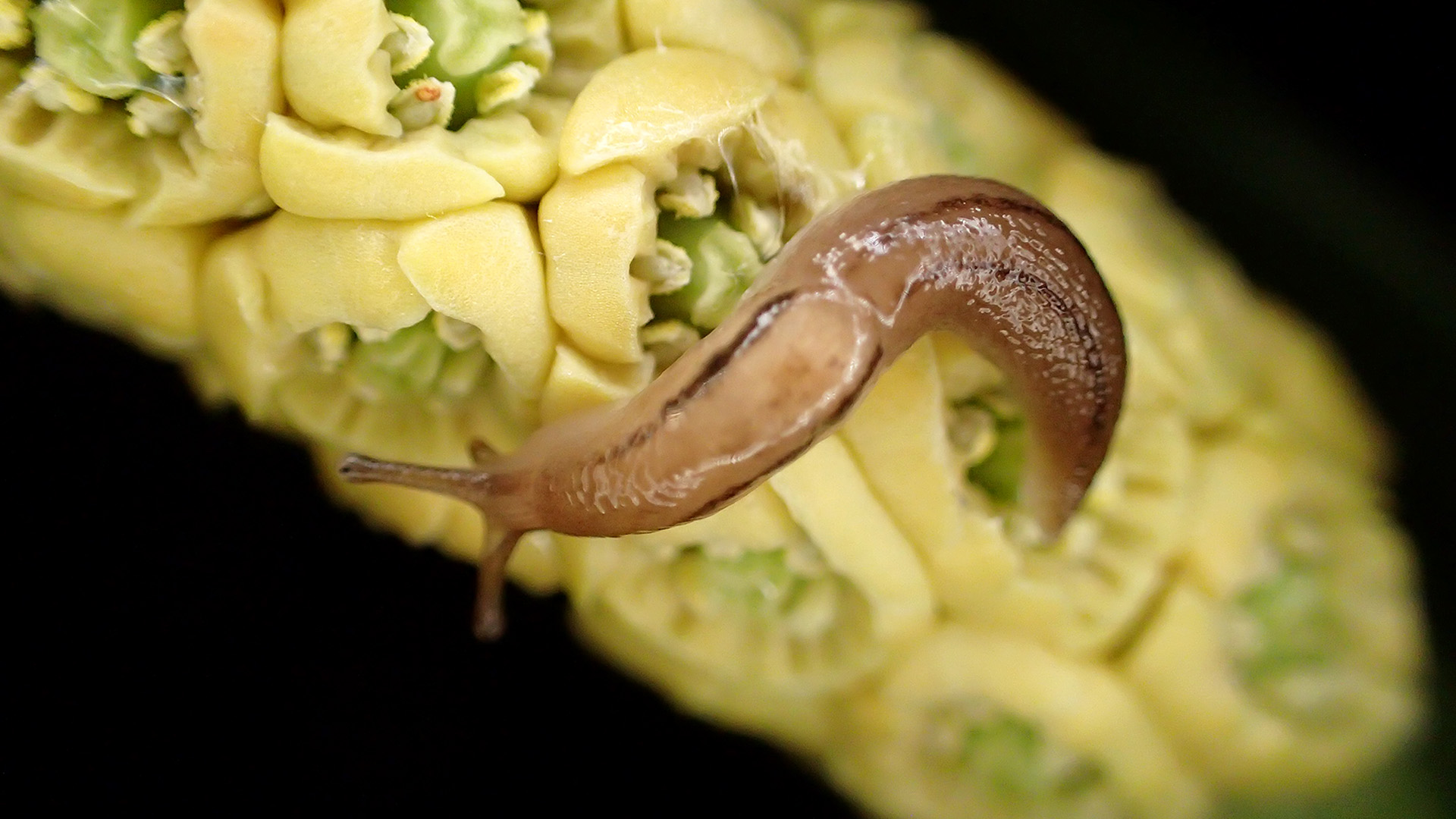
Do slugs and snails pollinate?
(Credit: Kenji Suetsugu)
Suetsugu's research on overlooked pollinators in Japan may also help solve a 100-year-old mystery in the field of pollination studies: do slugs and snails pollinate?
The idea that slugs and snails can pollinate plants is frequently mentioned in textbooks, but "robust evidence is surprisingly scarce", says Suetsugu. This type of pollination, known as malacophily, sounds plausible: as slugs and snails glide over flowers, they pick up pollen and transfer it. However, given that snails and slugs eat flowers, it is unclear whether such visits ultimately help reproduction – or whether they gobble up the flowers before there is any chance of fruiting.
A 2019 study by Suetsugu found that a type of slug, Ambigolimax valentianus, transferred pollen via fine threads of viscous mucus after visiting flowers of the Rohdea japonica plant –but that this did not lead to fruiting.
This happens because, incredibly, moths collect so much static electricity whilst in flight that pollen is pulled through the air towards them. The fact that they don't need to touch flowers in order to pollinate them makes them very good pollinators.
The majority of pollination research has tended to focus on day-flying insects, but researchers are now probing what is happening at night.
In 2023, researchers from the University of Sussex, UK, discovered moths may even be more efficient pollinators than bees. The team studied both daytime and nocturnal pollinator visits to bramble plants, a widespread species across Europe which is important to pollinators for its pollen and nectar. While the study found that 83% of all visits were made in the day, and just 17% made under cover of darkness (almost exclusively by moths), it also found the moths were able to pollinate the flowers more quickly than their daytime counterparts.
The authors say nocturnal pollination is understudied. As moths have been shown to transport pollen from wide variety of plant species, further research is needed to fully appreciate the role they and other nocturnal insects play in pollinating, they say.
Another recent study from the University of Sheffield, UK, found moths account for a third of all urban pollination. However, a lack of native plant species and diversity of plant life in cities, coupled with scent-stifling air pollution, is still leaving moths struggling to find their next meal. Now, experts are warning of an "alarming" global decline in moth abundance and diversity.
There are ways we can help, though, such as planting white flowers, leaving patches of scrub, rough grass and brambles to grow and turning off lights at night. Night-time pollinators such as moths, it turns out, need protecting just as much as bees.
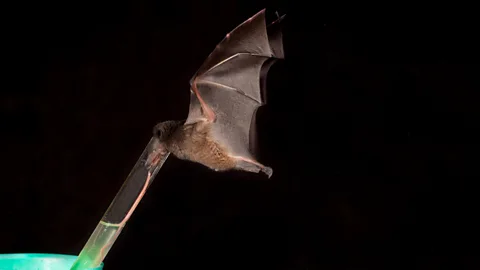 Alamy
AlamyBats
Bats are another oft-overlooked furry night-time pollinator. While most bats eat mainly insects, at least 500 plant species in the tropics and subtropics are pollinated largely by nectar-feeding bats. Scientists say that bat pollination (chiropterophily) could have advantages: their large size means they can transfer a lot of pollen at once, and they fly long distances compared with many other pollinators. However, the large size of bats can also make pollination by them energetically expensive for plants.
One example is the endangered greater long-eared bat, native to the south-western US and Mexico. It feeds mainly on the pollen and nectar of agave (used to make mezcal and tequila) and various cacti, hovering above the plants just like a hummingbird to feed. Along with the lesser long-nosed bat, it is the main pollinator of agave.
Like agave, the pale flowers these bats feed on are often long and bell-shaped, and many bats have evolved ways to reach the nectar at the bottom of them. An extreme example is the tube-lipped nectar bat, found in the cloud forests of Ecuador. The size of a mouse, it has a tongue more than one and a half times its body length – the longest tongue-to-body ratio of any mammal and is the sole pollinator of a plant with corolla tubes of matching length. While not in use, it stows this huge tongue down in its rib cage.
More like this:
• A wild 'freakosystem' has been born on Hawaii
• Elephants hate bees – here's why that's good news for Kenyan farmers
In fragmented tropical habitats, nectar bats play an important role in keeping certain plants populations healthy, but also in pollinating crops for farmers. However, researchers have warned that bats' status as a long-overlooked pollinator means there is a lack of knowledge of how dependent crops are on bats for harvest yield and quality.
A 2020 study found, for example, that bats were the main pollinators of pitayas (dragon fruit), a major crop in central Mexico – and that when bats were excluded from pollinating this crop, yields decreased by 35%. Experts have also warned that decreased populations of bats could lead to a fall in agave abundance.
Bats also play an crucial ecological role worldwide for wild plants and crops as both seed dispersers and insect eaters. Pest control by bats has been found to support many crops around the world – from coffee in Costa Rica and cacao in Indonesia to rice in Thailand and cotton in the US – sometimes to the tune of billions of dollars in avoided losses.
Like many other pollinators, bats are being impacted by environmental change around the world, with researchers warning that these changes are putting the pollination services bat species provide at risk.
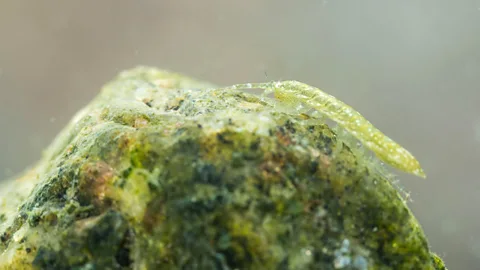 Alamy
Alamy'Bees of the seas'
Despite their tiny, inconspicuous flowers, seagrasses are capable of reproducing with no help from animals. Turtle grass, for example, a seagrass which grows in shallow seas across the Caribbean, has miniscule, pollen-producing male flowers and female flowers which don't produce pollen. In coordinated cycles, the female flowers open, followed by male flowers, which release pollen into the tides after sunset.
A decade ago, it was widely believed this was the only way that seagrasses pollinated, with pollinating animals only visiting flowers that bloom in the open air. But in an experiment at an aquarium in Mexico in 2016, ecologist Brigitta van Tussenbroek from the Universidad Nacional Autónoma de México and her colleagues showed marine crustaceans were in fact playing a role.
"At the onset of the night, many small organisms that were hiding during the day from predators started swimming around," she says. The majority were barely visible crustacean larvae, which approached the male flowers to feed on the energy-rich pollen embedded in "a slimy and sticky substance".
"Some of this substance and pollen attached to their body parts when they swim around, while also being tossed to-and-fro by the water movement," says van Tussenbroek. On the receiving end, the female flowers have "tentacle-like stigmas which capture the small pollen-carrying organisms", thus depositing the pollen grains.
Mostly, these invertebrates are at the whims of ocean currents, but when waters are calm, they are able to swim purposefully, she adds, earning these bugs the nickname "the bees of the seas".
"This was a complete surprise," says van Tussenbroek, and upended the belief that small free-moving fauna played no role at all in pollinating seagrass.
But perhaps even more surprising was the discovery in 2022 that tiny Baltic isopods help transport the pollen-like "spermatia" produced by red algae. Does it count as pollination if there is no pollen? The researchers call it "animal-mediated fertilisation" and ask what this means for our understanding of pollination, which is believed to have developed around 130 million years ago when flowering plants first appeared on land.
The discovery opens the possibility that these kinds of symbiotic interactions might have developed completely separately on land and in water – and that animal-mediated fertilisation may have emerged in the sea well before plants moved ashore.
--
For essential climate news and hopeful developments to your inbox, sign up to the Future Earth newsletter, while The Essential List delivers a handpicked selection of features and insights twice a week.
